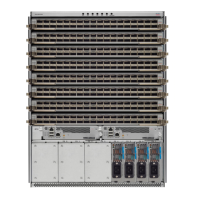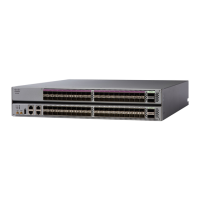We strongly recommended that you do not install or remove the SFP or SFP+ module with fiber-optic cables
attached to it because of the potential of damaging the cable, the cable connector, or the optical interfaces in
the module. Disconnect all cables before removing or installing an SFP or SFP+ module. Removing and
inserting a module can shorten its useful life, so you should not remove and insert modules any more than is
absolutely necessary.
Caution
When installing an SFP or SFP+ module, you should hear a click as the triangular pin on the bottom of the
module snaps into the hole in the receptacle. The click indicates that the module is correctly seated and secured
in the receptacle. Verify that the modules are completely seated and secured in their assigned receptacles on
the line card by firmly pushing on each SFP or SFP+ module.
Note
Bale Clasp SFP or SFP+ Module
The bale clasp SFP or SFP+ module has a clasp that you use to remove or install the module (see the figure
below).
Figure 7: Bale Clasp SFP or SFP+ Module
Install a Bale Clasp SFP or SFP+ Module
To install this type of SFP or SFP+ module, follow these steps:
Step 1 Attach an ESD-preventive wrist or ankle strap and follow its instructions for use.
Step 2 Close the bale clasp before inserting the SFP module.
Step 3 Line up the SFP module with the port and slide it into the port (see the figure below).
Connect Router to the Network
11
Connect Router to the Network
Bale Clasp SFP or SFP+ Module

